VISCOUS HEAT SOURCE IN AN ANNULUS
Section 9.4; Bird, Stewart and Lightfoot
A temperature profile for an annulus with a viscous liquid will be derived
using shell balances. The system consists of the two cocentric cylinders shown
in Figure 1 with a viscous fluid between the cylinders. Figure 2 shows the
idealized system that we consider.
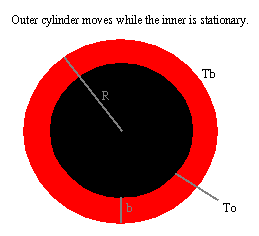
Fig. 1
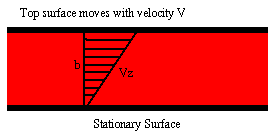
Fig. 2
The viscous heat source in this model is denoted by Sv, which depends on the
velocity profile and the viscosity of the liquid. The concept of viscous heat
dissipation is more throughly discussed in Chapter 10 of the book.
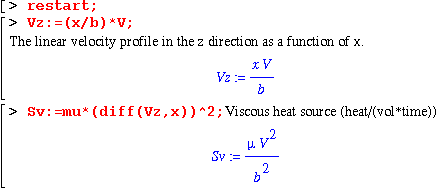
Now a thermal energy balance is taken over a segment of width dx and area A.
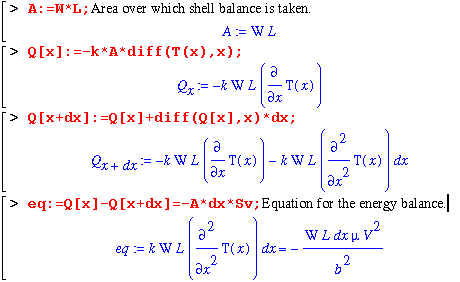
Notice that this equation is different from the ones given in the book. We are
using Maple here to solve one differential equation while the book splits the
differential equation into two parts and does two integrations. Hence, the
integration constants given below are different than those calculated in the
book.
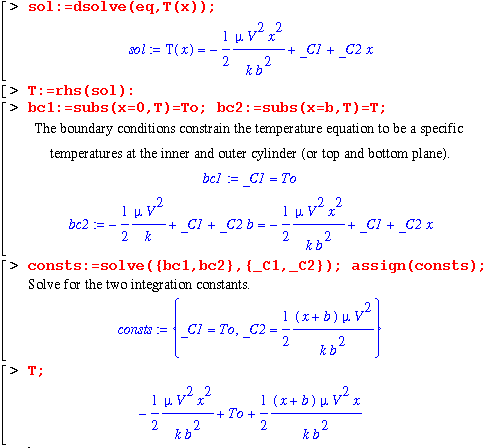
Maple has problems rearranging this equation into the form given in the book,
but a little bit of algebra will produce the form given in eq 9.4-11.

SAMPLE PROBLEM
Two cylinders of radius 1 ft and 1.01 ft are cocentric with the outer cylinder
rotating at 200 rpms. The outer and inner cylinders are at 100F and 150F
respectively, while water is used as the liquid between the cylinders.
Assuming that the water is at atmospheric pressure throughout this system
(probably not a good assumption), will this system raise the temperature enough
for some water to boil?
Ans: yes.





